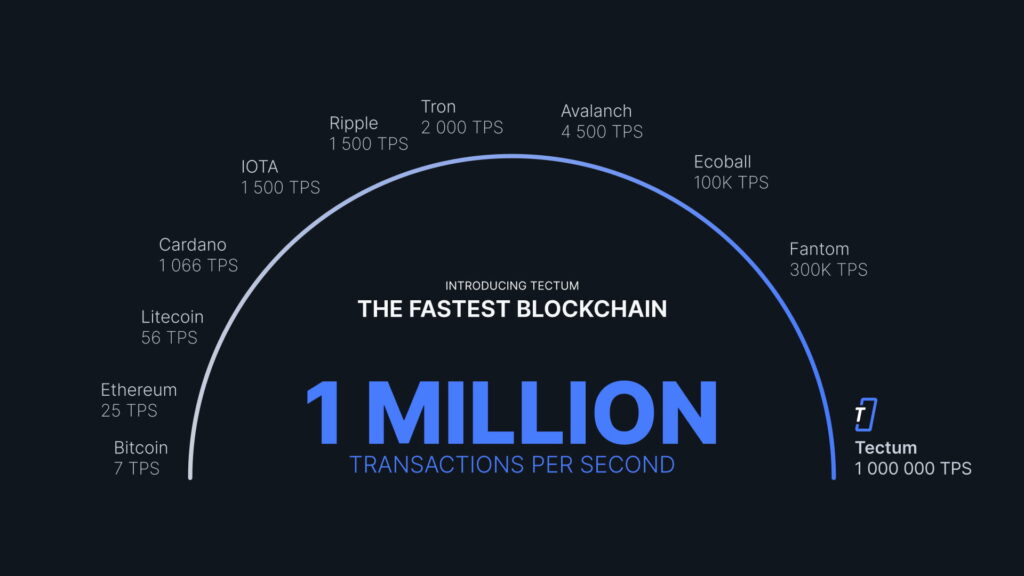Tectum Blockchain White Paper Released: Key Highlights
The Tectum community has been eagerly awaiting a comprehensive white paper on the groundbreaking Tectum blockchain technology. We’re excited to announce that the wait is over! The new white paper offers extensive details about the Tectum blockchain, its distinctive architecture, native TEC coin and TET token, and the platform’s future. Here, you can access the Tectum white paper.

In this article, we summarize the white paper’s key highlights and explain how Tectum’s innovative approach sets it apart from other blockchain projects.
Tectum’s Distinctive Blockchain Architecture
Tectum’s blockchain uses a radically different architecture compared to previous generations, designed for speed. It can handle over one million transactions per second (TPS) and offers near-instant finality and ownership updates across the network. The architecture has three tiers and stores data as hashes mapped back to the original data at a lower level using a proprietary distributed database protocol.
Proof-of-Utility Consensus Mechanism
Tectum’s Proof-of-Utility (POU) consensus mechanism employs verifiable randomness to elect a new master node more than five times per second. It also uses a dynamic node rating system to ensure chain governance rule compliance and penalize misbehaving nodes. POU focuses on useful actions like maintaining network connectivity, creating new peer-to-peer node connections, and validating hashes generated by the randomly chosen master node. This approach makes the Tectum blockchain energy and computationally efficient.
Overcoming the Blockchain Trilemma
The blockchain trilemma states that scalability comes at the cost of decentralization. Tectum addresses this trilemma with a unique architecture that provides exceptional speed without sacrificing decentralization or security. The three-tier structure allows Tectum to achieve the fastest blockchain performance for both transactions per second and blocks per second.
Hardware-Insensitive Low-Level Processing Infrastructure
Tectum node software doesn’t require specific hardware specifications, as long as it meets minimum requirements. The system is more sensitive to network latency and throughput than CPU performance, making it suitable for various hardware configurations.
Native TEC Coin and TET Token
- TEC: The native Tectum token, TEC, is minted when Tectum nodes process a BTC transaction. TEC is redeemable for real BTC and represents a share of the entire treasury wallet’s ownership. TEC acts as a store of value and rewards node operators with BTC generated by BTC overlay node activity.
- TET: TET is a Tectum blockchain token that can mint new SoftNote bills and transfer value between Tectum wallets without incurring ‘gas’ fees. When the Tectum blockchain transitions to fully public operation, TET will be used in a staking model where the number staked affects an individual node’s Rating Stake Modifier (RSM), influencing its likelihood of being nominated as an Elect Node in a network cycle.
Hybrid Protocol Proof of Utility Consensus
Tectum blockchain aims to decentralize in three phases, starting with the current private blockchain model and ending with a fully decentralized public and open-source ledger. The transition will involve various stages, including introducing a staking mechanism using TET tokens, leading to a more decentralized and robust network.

